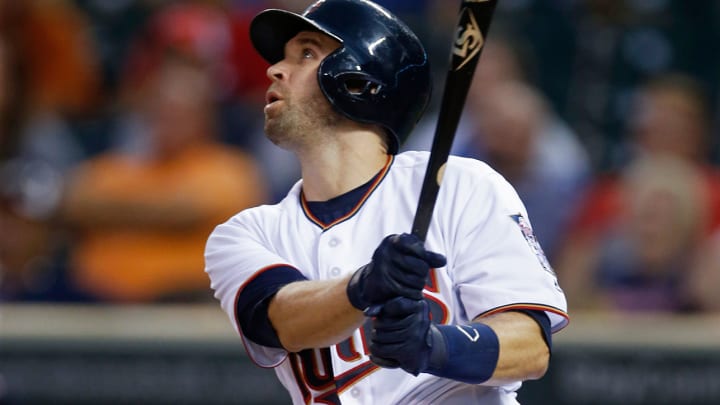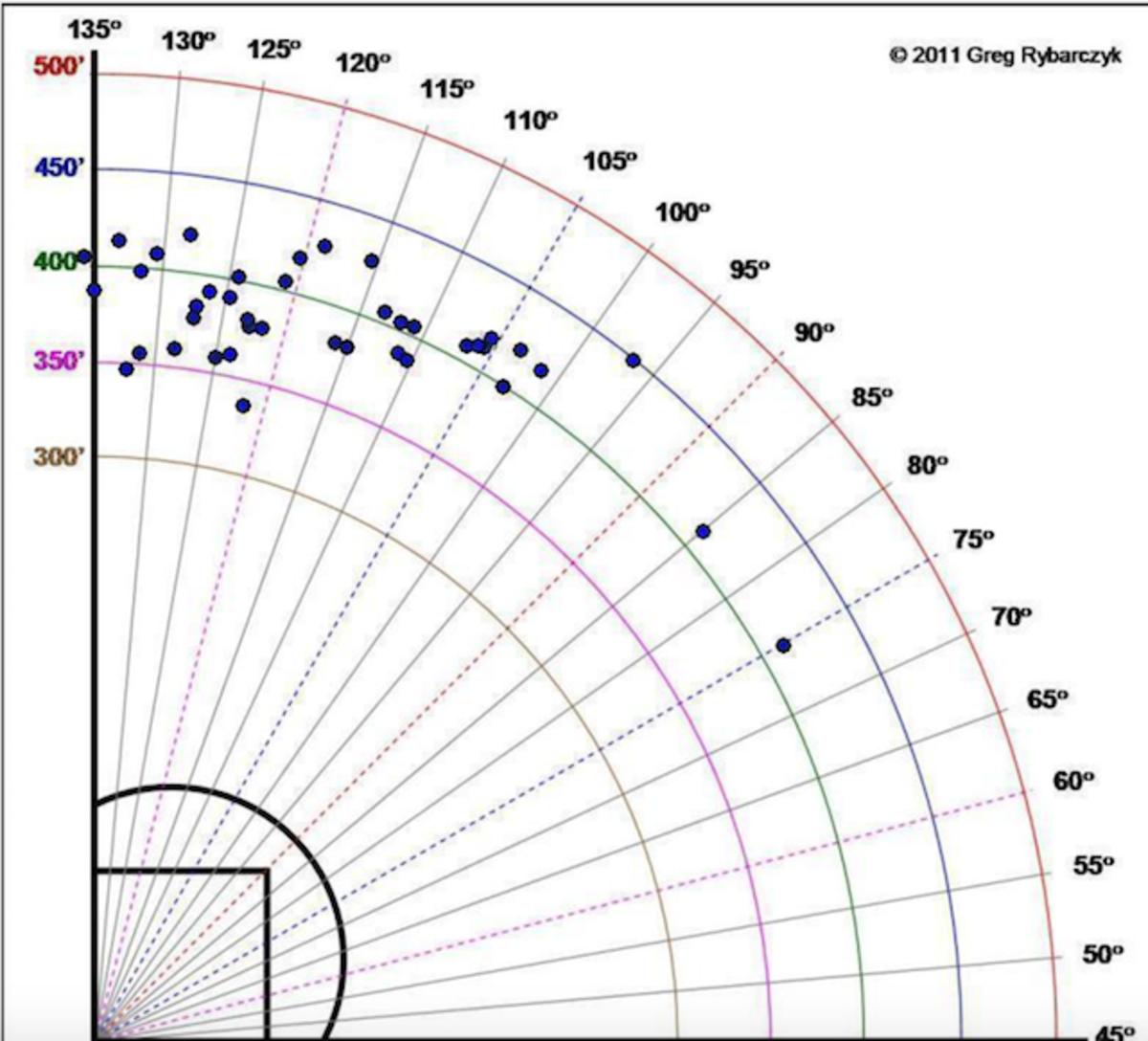Fantasy baseball busts: Picking the players to avoid in the American League

"Bust" has become so familiar a term in fantasy parlance that it has lost its original meaning. A player can be a bust because he was overvalued or fell short of expectations. The key feature of a bust, however, is his high profile coming into the season. For a player to be a true bust, his poor season must do serious damage to his owner's chances of winning a title. It doesn’t matter if your 11th-round pick doesn’t measure up to his draft-day price; that's unfortunate, but it won’t be the difference between a contender and an also-ran.
As such, every player you see in our AL busts column and our NL busts column will be among the top-70 players in FantasyPros' consensus rankings. We aren’t going to give you a ton of names, because quantity is not our goal. Instead, we’re going to help you sidestep this season’s most dangerous potential landmines.
• Get ready for the 2017 fantasy baseball season with our top 300 player rankings
Xander Bogaerts, SS, Red Sox
Bogaerts is the player we’ve come to know over the last two seasons—a former elite prospect who, over the last two years, has slashed .307/.355/.434 and is entering his age-24 season. It would be silly to expect anything from him at the plate other than what we’ve seen the last two seasons, and he heads into this season rightfully as a top-five fantasy shortstop. So how is it possible he’s in our AL busts column?
Fantasy production isn’t limited to what the player in question can accomplish on his own. Part of what made Bogaerts so great last season was Boston's lineup as a whole. Bogaerts's on-base percentage last season was one one-hundredth of a point higher across 65 more plate appearances than it was in 2015. That contributed to, but cannot fully explain, his jump to 115 runs scored from 84. He also drove in eight more runs last season, though he earned that largely on his own by hitting a career-high 21 homers. Still, there’s some teammate-related risk that is not fully baked into Bogaerts’s draft-day price.
David Ortiz, who hit .315/.401/.620 with 38 homers and 48 doubles last year, is enjoying retirement, and his absence puts even more pressure on Hanley Ramirez to repeat his resurgent 2016 campaign. Is Andrew Benintendi ready for an everyday role? Can Pablo Sandoval give the Red Sox league-average production at third base? Can Dustin Pedroia keep it going in his age-33 season? Even if we assume Mookie Betts is a perennial MVP candidate, Boston’s offense, which was a machine last year, could be merely great this year. If that has a chilling effect on Bogaerts’s RBI and run totals, he could fall short of his fantasy production last season, even if he takes another step forward in what is becoming a potentially superstar career.
Bogaerts never showed the level of pop he had last year beyond the high A level in the minors. It’s entirely possible that he naturally grew into more power, but fantasy owners should look at 21 homers as a ceiling, not a floor. Steamer projects him to hit .296/.354/.448 with 16 homers, 78 RBIs, 82 runs and nine steals. That would go down as another great season, but it wouldn’t make him worthy of being a top-30 pick.
• POSITION PRIMERS: C | 1B | 2B | SS | 3B | OF | SP | RP
Brian Dozier, 2B, Twins
For the last two months of the season, Dozier was a modern-day Babe Ruth: He hit 23 homers in August and September, tying a record for jacks in one season by a second baseman with 42. He also became the first second baseman to leave the yard at least 40 times since Ryne Sandberg did it in 1990. There wasn’t a whole lot to cheer in Minnesota last season, but Dozier’s transformation into one of the league’s most feared power hitters was a bright spot.
That surge also has Dozier set up for a great fall this season. All of his excess value last season can be traced to the 42 homers; he ranked third in the league in the one statistic that contributes to every fantasy category in standard leagues. A player who hits 42 home runs in a season is going to be awfully valuable in 99 out of 100 instances. It wasn’t just the direct value of his home runs, though. All those roundtrippers brought Dozier to respectability in the one categories where he has typically struggled: batting average and OBP.
Dozier slashed .268/.340/.546 last season. The batting average and slugging percentage were easily career highs, and the OBP was the second-best mark of his career. Despite that, his BABIP was down at .280, 19 points higher than the previous season and seven points better than his career total. Home runs, though, are not included in BABIP; when Dozier did put the ball in play, he was largely the same hitter. The home runs were entirely responsible for the increase in his slash rates.
All of that raises an obvious question: Can Dozier approach last season’s 42 home runs? I say no, and for three reasons. First, Dozier’s gaudy homer total was the function of him hitting a lot of fly balls. His home-run-to-fly-ball ratio was 18.4%, which ranked 34th in the league, but his fly-ball rate was 47.7%, good for third. The two players who hit a higher share of fly balls, Todd Frazier and Chris Carter, also left the yard more than their fair share, but did so without a huge HR/FB ratio.
Second, Dozier’s average true home run distance of 396.7 feet ranked 94th among the 117 players who hit at least 18 home runs, according to ESPN’s online hit tracker. Six of the other seven players with at least 40 homers last year had an average true home run distance of 406.1 feet or better. The other who didn’t, Frazier, checked in at 398.1 feet. Dozier’s power simply is not suggestive of a 40-homer hitter.
Finally, Dozier is an extreme pull hitter. Check out his home run spray chart from last season.

While that helps Dozier yank balls out of the park that only travel 380 feet, it also gives him a tendency that pitchers can attack. He has been an extreme pull hitter his entire career, and it had something to do with him topping out at 28 homers before last season. If we look at that as a more realistic total for him this year, it’s easy to see why he’s significantly overvalued at a FantasyPros consensus rank of 32.
Rougned Odor, 2B, Rangers
One quick and easy way to think of Odor is Dozier without the track record. Or is Dozier just Odor without the promise of youth? Either way, the risk both present is the same. Can they possibly match last year’s home run total? And if they can’t, just how far will they fall in the fantasy ranks?
Odor hit 33 bombs last year, his age-22 season, and through just more than 1,500 career plate appearances, he has 58 home runs. We can safely say power is going to be part of his game for his entire career, but is he really a consistent 30-homer-per-year player?
Odor presents a few of the same issues as Dozier. First, he reached 33 homers with a 17% home-run-to-fly-ball ratio. Like Dozier, he succeeded by hitting a lot of fly balls with an above-average HR/FB ratio. It was the volume of fly balls, however, that made the biggest difference. We know that because, like Dozier, Odor didn’t exactly remind anyone of Giancarlo Stanton: His average true home run distance of 398.5 feet ranked 86th among the 117 players with at least 18 homers. Odor may be a 30-homer threat, but he is far from a 30-homer guarantee. That’s a crucial difference, especially when he’s a three-and-a-half category player. And if last year is any indication where the league is headed, 33 homers just doesn’t buy you what it used to.
Odor’s FantasyPros consensus rank sits at 42, better than Jose Abreu, Johnny Cueto, David Price and Christian Yelich, among many others. It’s possible he performs to that level, but, as is the case with many of our bust calls this season, there’s little room for profit at that price. Any fantasy owner who grabs Odor in the middle of the fourth round of a 12-team league is assuming that he continues on the trajectory he set last year. Given all the other options still on the board at that time, it’s a risk not worth taking.
Chris Davis, 1B, Orioles
In 2010, his age-30 season, Adam Dunn put up what had become by then a typical Adam Dunn season, as much for its production as its lack of appreciation. In what would be his final season with the Nationals, he hit .260/.356/.536 with 38 homers and 103 RBIs. He struck out a lot, but he also took plenty of walks and circled the bases once in every 6.8 at-bats. It was just the sort of season Dunn was known for at that stage of his career, the type that made him one of the league’s most perennially underrated players. It was also the last time we saw that version of him. Dunn left the Nationals for the White Sox in 2011 and proceeded to have the worst year of his career at age 31, slashing .159/.292/.277 with just 11 homers despite making nearly 500 trips to the plate. He would bounce back to respectability over the next few seasons but slashed just .214/.329/.443 with an average of 32 homers for the last three years of his career.
Why the trip to the history books? Davis is the closest thing we have to Dunn in the majors today, and he’s entering his age-31 season. Davis hit 38 homers last year, but he was down across the board, posting a .221/.332/.459 slash line. Like Dunn, Davis strikes out too much to be better than neutral in batting average. That’s what makes walks such a crucial part of his game. If he’s hitting enough to get to a .350 OBP, he can be an asset in that category for leagues that use it and also push 100 runs. If he’s not, he becomes a two-category player. That’s where the risk lies with Davis.
Like Dozier and Odor, Davis is made less valuable by the league-wide uptick in power. Steamer projects Davis for 35 home runs this season. Even just three years ago, that would have made his projected .231 average and .334 OBP perfectly acceptable. Those numbers aren’t likely to translate the same way in 2017.
Davis comes off the board early in the sixth round of a typical 12-team league, in the same area as players like Todd Frazier, Kyle Schwarber and Justin Upton, all of whom could have similar flaws. While the price is in line with the expected production, Davis could have his fantasy owners at a deficit at one of the game’s most important positions. First base is too important to take on Davis’s risk when proper planning will help you land one of the stars at the position or take a shot on a cheaper player with the same overall upside, like Carlos Santana or Eric Hosmer.
